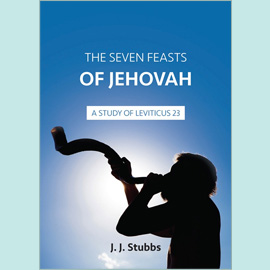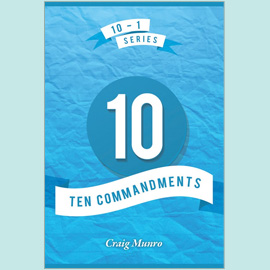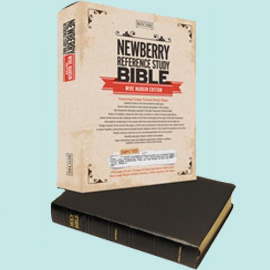In many countries of the world believers gather on the first day of every week, the Lord’s Day (Rev 1.10), for a meeting generally known as the "Breaking of Bread" (Acts 2.42) or the "Lord’s Supper" (1 Cor 11.20). The believers worship, praise, thank, and bless God for the life, the sacrificial, substitutionary death, and the coming again of their Lord and Saviour Jesus Christ. They present to God the manifold beauties, holiness, loveliness, splendours, glories, pre-eminence, and all-sufficiency of His only begotten, adorable, and altogether lovely Son. The believers see before them a loaf of bread and a cup of wine. These simple emblems speak respectively of the body of the Lord Jesus Christ which was offered on the cross, and His precious blood which was shed. Simple though the symbols are, they represent a depth and profundity of meaning that only God can fully understand.
At the Breaking of Bread meeting the believers are concerned not with their own blessings or needs but with the person, wonders, and glories of their Saviour, the Lord Jesus Christ, whom they seek to exalt, extol, and present to His Father.
This do
The Lord instituted only two ordinances for believers to keep (1 Cor 11.2). Baptism is to be observed once by an individual believer, and the Breaking of Bread is to be observed by all believers in fellowship in a local assembly who are sound in faith and obey the revealed will of God in their lives. Those who have been received into the fellowship of the assembly as visitors may also take part in this meeting. Instructions regarding the Breaking of Bread were given to the Apostle Paul by the ascended Lord (1 Cor 11.23-34), and we read in Acts 2.41-42 that "they that gladly received his word were baptized. And they continued stedfastly in the apostles’ doctrine and fellowship, and in breaking of bread, and in prayers".
In accordance with God’s command, the Passover feast was to be observed annually by His chosen people, the Israelites. The feast brought to mind the people’s deliverance from death and from Egypt under the shelter of the blood of the spotless lamb (Ex 12.3-28; Lev 23.4-8). The Passover looked forward to the death of the Lord whose blood was shed that our sins might be forgiven (Heb 9.22). Peter wrote of believers being redeemed "with the precious blood of Christ, as of a lamb without blemish and without spot" (1 Pet 1.19).
The Lord had earnestly desired to eat the last Passover with His disciples before He was to suffer (Lk 22.15), and when they were gathered together in the Upper Room to keep the Passover feast the Lord instituted the ordinance of "Breaking of Bread". It was "the same night in which he was betrayed" by Judas Iscariot (1 Cor 11.23).
After Judas had left the Upper Room so that he might betray Him (Jn 13.30), the Lord was left with His eleven disciples. He was with those He loved (Jn 13.1), and who loved Him. The bread and wine on the table had been part of the Passover meal. The Lord "took bread, and blessed it, and brake it, and gave it to the disciples, and said, Take eat; this is my body. And he took the cup, and gave thanks, and gave it to them, saying, Drink ye all of it; For this is my blood of the new testament, which is shed for many for the remission of sins" (Mt 26.26-28).
The Breaking of Bread meeting is the first meeting on the Lord’s Day, when believers gather together to obey the Lord’s command, "this do in remembrance of me" (1 Cor 11.24-25). Paul waited for seven days in Troas so that he could be at the Breaking of Bread meeting on the Lord’s Day, and on "the first day of the week, when the disciples came together to break bread, Paul preached unto them" (Acts 20.7). Worship, praise, and giving thanks to God should precede service done through the power of the Holy Spirit and for the glory of God.
The loaf is symbolic of the Lord’s body. It was offered for us but none of His bones were broken (1 Cor 11.24; Jn 19.36). The loaf also represents His body, the Church. We see this in 1 Corinthians 10.16-17 where the cup is mentioned before the bread. This brings to mind the fact that those of us who have been saved appreciated first of all, by grace, the efficacy of the shed blood of the Lord Jesus Christ (1 Jn 1.7), then we became part of the Body of Christ (Eph 1.22-23). The one loaf and the cup also represent the union and communion of believers with the Lord and with one another. In 1 Corinthians 11.25 we read of the Lord saying, "This cup is the new testament [covenant] in my blood". This new covenant is referred to in Jeremiah 31.31-34 and its terms are laid out in Hebrews 8.10-12. All who have been saved enjoy the blessings of the new covenant which was ratified by the blood of the Lord Jesus Christ. When, during the Millennium, all Israel is saved, they too will enjoy the blessings of the new covenant.
Let a man examine himself
We come together on the first day of the week, with the loaf and the cup before us, intending to partake of the broken loaf and the cup of wine. We do these things in remembrance of the Lord and all He is. Brethren and sisters should come as holy priests with their hearts full of the thoughts the Spirit has placed in their minds during the previous week. As led by the Holy Spirit, the brethren audibly and the sisters silently present the wonders of the Lord to His Father, worshipping, praising, blessing, and giving thanks to God.
If we are conscious of unconfessed and unabandoned sin in our lives then, for us, the Breaking of Bread meeting will degenerate into an empty formality. We are warned not to take the bread and the cup unworthily for we read, "let a man examine himself, and so let him eat of that bread, and drink of that cup" (1 Cor 11.28). We are not told that we should not partake of the emblems, but having confessed, judged, and abandoned known sin (1 Jn 1.9) before coming to the meeting, we should then partake of the loaf and cup. The consequences of not judging ourselves can be serious and may involve chastisement and even death (1 Cor 11.29-30).
Till He come
The Breaking of Bread meeting proclaims to the world, to angels, and to demons that the Lord has come, has suffered, bled and died, has risen from the dead, and is coming again. One day, believers will gather for the last time to obey the Lord in keeping this ordinance. We read, "For as often as ye eat this bread, and drink this cup, ye do shew [proclaim] the Lord’s death till he come" (1 Cor 11.26).
The Lord Jesus Christ is central at the Breaking of Bread meeting and we bring pleasure to God as we share something of His eternal delight in His beloved Son, who loved and glorified His Father (Jn 14.31; 13.31), and to whom He was "obedient unto death, even the death of the cross" (Phil 2.8). We sometimes find that there are more believers gathered together at the Breaking of Bread meeting than at any other meeting of the assembly. There is something fundamentally wrong in the spiritual lives of believers who are absent, without valid reason, from meetings held during the week. Again, it is not uncommon for the Breaking of Bread meeting to be the last meeting some believers attend before separating themselves completely from the assembly. Such should be sought after and prayed for by those in fellowship. Let those of us who gather week by week to obey the Lord’s command, "this do in remembrance of me", pray that, by grace, we might love, obey, and serve Him and continue faithfully to proclaim "the Lord’s death till he come".
Concluded.









